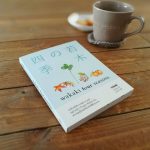Warning: Trying to access array offset on value of type bool in /home/stsep/slowtrip-saga.com/public_html/wp-content/themes/gensen_tcd050/functions/short_code.php on line 36
Long ago, in the Edo era, Europeans used to say “Imari-yaki”, referring to pottery that is now called Arita-yaki. It is because this pottery used to be exported from the small port town of Imari. The pottery was transported through the United East Indies Company, abbreviated VOC in Dutch.
Nowadays, there is a clear distinction depending on the production site of the pottery.“Old Imari” means pottery, including Arita-yaki, that was made in the Edo Era. Apart from that, pottery made in Arita is Arita-yaki, and that made in Imari is simply called Imari-yaki.

As for me, I could not understand the distinction between the two, which was confusing and frustrating. The books I referred to mentioned the two names interchangeably. The distinction finally dawned on me after I moved to Saga. Until then, I did not much appreciate the art of pottery. I barely knew how profoundly delicate, invaluable, and fascinating the world of pottery is.
 The first time I visited Saga, I spent some time at the Kyushu Ceramic Museum. The visit was an excellent opportunity to see the world of ceramics made in Kyushu. Interestingly, some ceramics from Thailand were also exhibited. Sometimes ancient Thai cultural artifacts can be found in faraway places, such as Japan, while it is difficult to see them in our home country. This kind of unexpected encounter always gives me joy. It feels like you have run into your ancestors during an adventure in a foreign country.
The first time I visited Saga, I spent some time at the Kyushu Ceramic Museum. The visit was an excellent opportunity to see the world of ceramics made in Kyushu. Interestingly, some ceramics from Thailand were also exhibited. Sometimes ancient Thai cultural artifacts can be found in faraway places, such as Japan, while it is difficult to see them in our home country. This kind of unexpected encounter always gives me joy. It feels like you have run into your ancestors during an adventure in a foreign country.


Having had the opportunity to get a glimpse of the world of ceramics encouraged me to learn further about pottery. Though my family budget is slightly tight, we did buy
the same Arita-yaki dish that is used in the popular “Arita-yaki Curry and Rice Bento (Lunch Box).” If I remember correctly, the price was around 1,500 yen. I was also impressed by the excellent naming of this product. Let me explain.
1 Arita-yaki is the name of pottery produced in Arita.
2 Here, “yaki” at the end of the word also means “bake” or “cook.” Thus, “…yaki curry and rice” refers to curry and rice baked in an oven with a cheese topping.
3 Bento means a lunchbox and here refers to the local specialty lunchbox sold at train stations.
Isn’t it apt naming? After I ate the curry and rice, I kept the washed dish in a box and eventually took it home to Thailand and used it for serving curry and rice.
As for Imari-yaki, I first bought an Imari–yaki item after I moved to Saga. The sound of the item was really pretty and uplifting. No wonder, as it was a wind bell.

Since one cannot truly appreciate the world of Saga pottery until you try and use it, I have started to save some money to spend at the pottery market scheduled to take place during the national holiday season (Golden Week) in Japan.


Living in Saga, you have a lot of opportunities to see and hear about various kinds of pottery, including Nabeshima-yaki, Karatsu-yaki, Takeo-yaki, Shiraishi-yaki, Shiota-yaki, and Hizenyoshida-yaki, and the list go on. However, my budget is limited, so I decided to buy ceramics made nearby, slowly, one by one. They include Kuromuta-yaki and some from the local factory of the ceramic artist Yasuhiro Watajima, who works here in Wakagi,.
So much beautiful pottery – that’s another appeal of Saga to entice people to come and live here.
Photo: Saga Prefectural Tourism Federation

Author name: Noi
Hometown: Bangkok, Thailand
I live in Wakaki-cho, Takeo City, Saga Prefecture, together with my Japanese husband, raising our child.
In Thailand, I used to do art and publication-related work.
I have a Kyushu Special Zone Guide-interpreter’s license (in Thai).

 TH
TH KR
KR JP
JP

